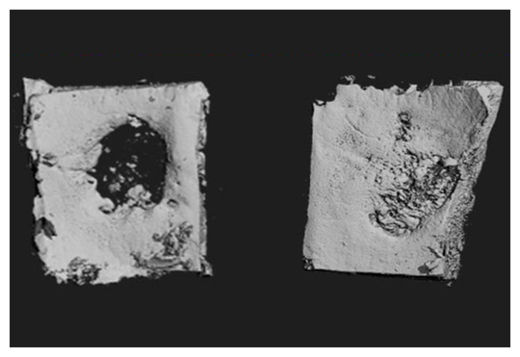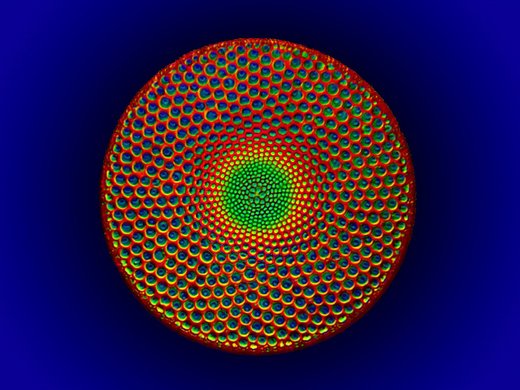
According to the team's report in the journal Biomaterials, their novel collagen structure is seeded with particles containing the genetic instructions necessary for producing bone. In experiments, the gene-team was successfully able to regrow enough bone to cover skull wounds in test animals.
The research team said their method is different from previous efforts because it delivers bone-growing instructions to cells from within the organism. Other attempts had used applications from the outside, which is expensive, intensive, and more difficult to consistently replicate.
"We delivered the DNA to the cells, so that the cells produce the protein and that's how the protein is generated to enhance bone regeneration," said study author Aliasger Salem, a pharmacy professor at the university. "If you deliver just the protein, you have to keep delivering it with continuous injections to maintain the dose. With our method, you get local, sustained expression over a prolonged period of time without having to give continued doses of protein."
Study author Satheesh Elangovan, a professor in UI's College of Dentistry, said the new method could be a game-changer for patients who need dental implants, but don't have sufficient bone in the necessary area. The scaffold could also be used to fix birth defects involving missing bone around the head or face.
"We can make a scaffold in the actual shape and size of the defect site, and you'd get complete regeneration to match the shape of what should have been there," Elangovan said.
For the new method, the team first loaded a collagen scaffold with synthetic DNA plasmids, each containing genetic instructions for producing bone cells. The device was tested by loading the scaffold on to a 5-millimeter by 2-millimeter missing area of skull in lab rats. Four weeks later, the team compared the scaffold's effectiveness to both a scaffold without plasmids and taking no action at all.
The Iowa team found their novel device grew 44-times more bone and soft tissue than the scaffold alone and was 14-times more than the affected area without manipulation. Imaging scans showed the seeded scaffolds had grown enough bone to almost close the wound area, the researchers said in their report.
"The delivery mechanism is the scaffold loaded with the plasmid," Salem said. "When cells migrate into the scaffold, they meet with the plasmid, they take up the plasmid, and they get the encoding to start producing PDGF-B, which enhances bone regeneration."
The research team noted their system is non-viral, meaning it is less likely to cause an undesirable immune response and is easier to mass produce.
"The most exciting part to me is that we were able to develop an efficacious, nonviral-based gene-delivery system for treating bone loss," said study author Sheetal D'mello, a graduate student at the university.
The study researchers said they plan to work on a biological platform that spurs new blood vessel growth - which is necessary for extended and sustained bone growth.



Reader Comments
to our Newsletter